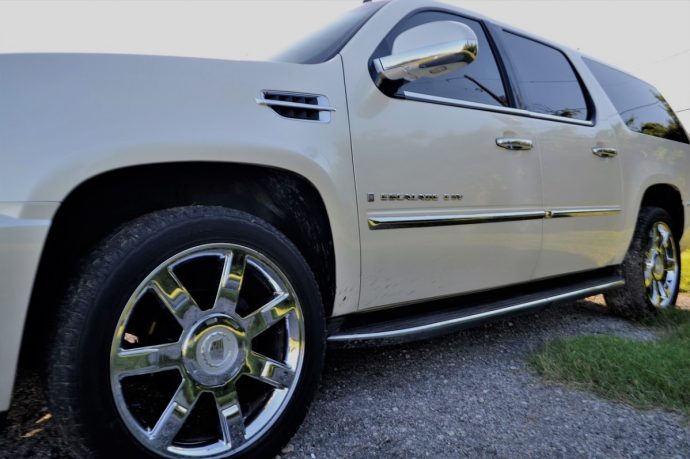If you’re rotating your tires yourself or having them rotated by a mechanic, you are completing one of the most crucial vehicle maintenance items. While your tires are being rotated, it makes a great time to perform a few quick checks on them to ensure they’re ready to carry you safely until the next rotation. To make the most of your time, here are four tire checks you should make whenever you rotate your tires.

Tread Depth
The tread depth on your tires is directly related to its ability to maintain grip while on wet roads. Without good tread, tires can’t properly wick moisture away, meaning that a layer of water can form between your tire and the road, leading to hydroplaning.
The tread depth should never go below 2/32″ and is much safer when it’s 4/32″ or greater. An easy way to check safe tread depth is to use a penny. With the penny facing you, place the penny upside down into the tire groove. If all of Lincoln’s head is visible, it’s definitely time to replace your tires.
Tire Pressure
Tire pressure and tread depth are closely related, as inadequate tire pressure will cause your tires to lose tread depth at an accelerated rate. Tires that are overinflated put less of the tire in contact with the road, putting you at greater risk of losing control. Proper tire pressure will be listed in your owner’s manual and on a sticker on your door panel. Carefully check each tire with a tire pressure gauge and then make adjustments as necessary.
Wear Pattern
Tires can tell you a lot based on how their tread wears. When you are rotating your tires, therefore, it’s important to check these wear patterns to see if any adjustments need to be made. Uneven wear can indicate incorrect tire pressure, poor alignment, bad balancing, and a host of other issues. If you notice uneven wear patterns, it’s a good idea to, at the very least, have your vehicle’s alignment checked.
Check for Chips and Punctures
Roads have more than their fair share of unexpected hazards that your tires have to deal with. Since a large portion of your tires aren’t visible when they’re on your vehicle, it’s a good idea to check for any abnormalities while you have your tires off to rotate them.
It’s especially important to check for punctures from nails or other debris, as these will eventually cause the tire to lose air if it hasn’t started losing air already. You should also check for chips in the tires, which are usually caused by rocks coming into contact with your tires at high speeds.
If you notice an issue with one or more of your tires, it’s important to consult with a tire dealer to decide if you need to replace the tires or if they can be repaired. Of course, repairing a tire is the less expensive option, but it’s not always the safest. Since you depend on your tires to get you safely where you need to go, replacing them when their time has come is one of the most important things you can do.

